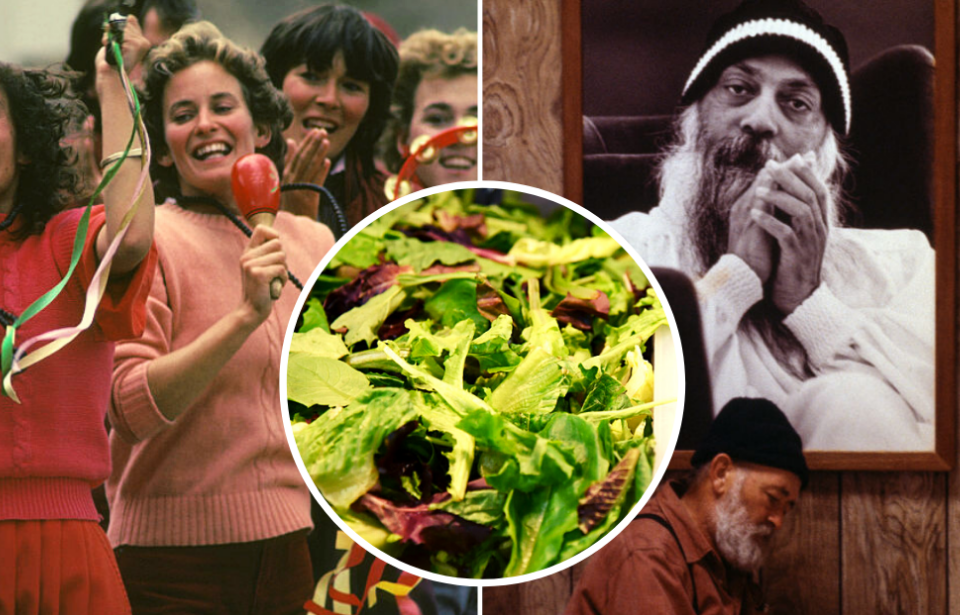Salad is the safest and healthiest option on a menu, right? Not in 1984, when 751 people suffered food poisoning in the first-ever bioterrorist attack in United States history.
A new start with expansion stifled
Rajneesh was an Indian mystic and founder of the Rajneesh movement. In 1981, Rajneesh and his followers (known as Rajneeshees) moved to Wasco County, Oregon. The movement turned a 64,000-acre ranch into a facility known as Rajneeshpuram.
The nearby town of Antelope had a population of between 40 and 75 people. The Rajneeshees – who numbered around 21,000 – turned out to vote in local elections, winning the majority of the council seats. After taking control of the town, the followers changed its name to Rajneesh.

According to The Atlantic, the Rajneeshees “raised property taxes to extract money from the few remaining local residents, and passed other bizarre initiatives, including renaming the local recycling center the Adolf Hitler Recycling Center.”
Wasco County locals didn’t care for how the cult moved in and then took over a large part of the county. In return, the Rajneeshees were outraged to be denied building permits to expand the commune further. That was when some members of the cult came up with a drastic plan.
A two-part plan: homeless voters and poison
Coming up in November 1984 was a county election where three seats on the Wasco county commission were on offer. The Rajneeshees realized that if they could win two out of the three seats, they would control most of the county.
But to do that, they needed more voters. Only 239 out of the people living in Rajneeshpuram were eligible to vote because the majority of them weren’t US citizens.
Rather than trying to win over Oregon residents to their cause, the followers decided on a two-part plan. Firstly, they would transport a large number of homeless people to Rajneeshpuram under a bogus “Share-a-Home” scheme. Around 2,300 homeless individuals were brought to the compound in buses and then forced to immediately register as voters.
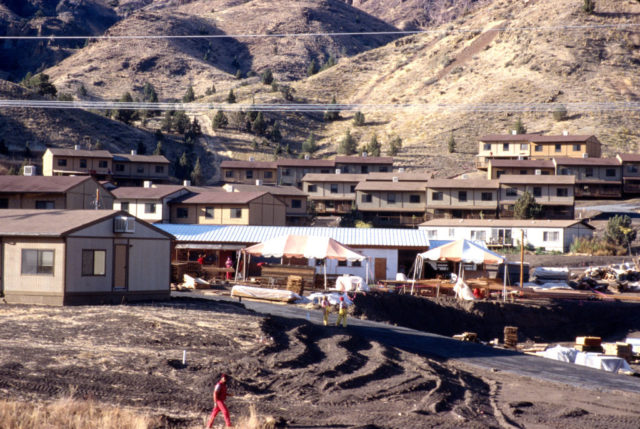
The authorities were one step ahead of them, however. Secretary of State Norma Paulus instituted a rule that all those registering to vote in Wasco County had to attend an eligibility hearing and prove they satisfied the 20-day residency requirement.
The plan moves into its testing phase
The second part of the plan was to reduce the number of people who would vote against their candidates. How? By poisoning the local population.
Around twelve followers ordered Salmonella bacteria from a medical supply company and grew cultures of the bacteria in the Rajneeshpuram medical labs.
To test their plan, when two Wasco County commissioners visited Rajneeshpuram on August 29, 1984, they were given glasses of water contaminated with Salmonella. Both men fell ill, and one of them was hospitalized.
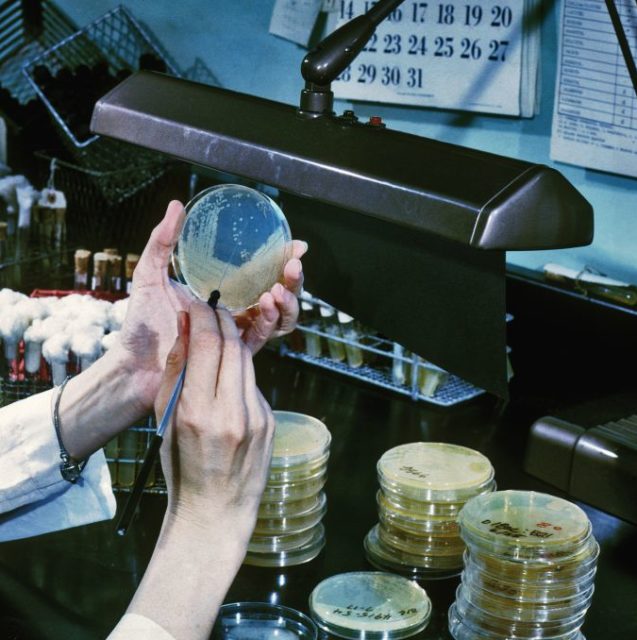
When spreading Salmonella on items in the grocery store as well as on doorknobs and urinal handles didn’t work, the Rajneeshees decided that a more direct approach was required.
If you can’t beat them, poison them
During September and October 1984, followers went into ten restaurants in a nearby city called The Dalles, taking with them Salmonella cultures in brown liquid. The followers would either sprinkle this liquid over the salad bars or pour it into salad dressings.
Since The Dalles is the largest city in Wasco County, it was hoped that contaminating food there would result in the largest number of poisonings. By the end of September, 751 people had come down with acute gastroenteritis with symptoms including diarrhea, chills, vomiting, headaches, and abdominal pain. More than 150 people were violently ill, with 45 of them being hospitalized. To put those numbers in perspective, the CDC states that the county “typically reports fewer than five cases per year.”
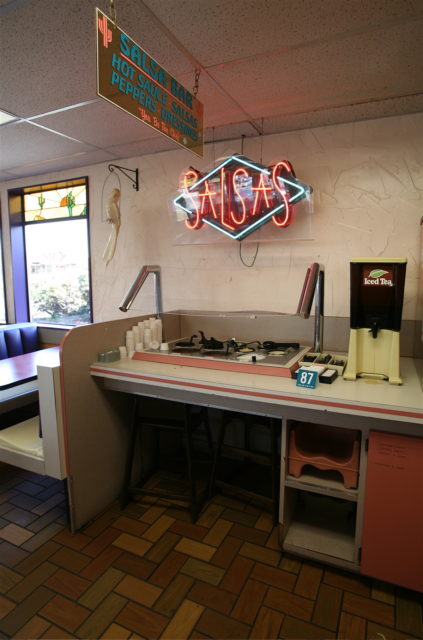
No fatalities, but it was a close thing for some
Although no one died from this attack, it was a close call for some. The oldest victim was 87 years old, while the youngest was a baby who was born two days after his mother was infected. He was given only a five percent chance of survival but pulled through.
In addition, the county commissioner who was hospitalized in the August trial would have died if he’d not made it to the hospital.
The trial backfires
This September attack was supposed to be a trial run, with the followers intending to do it again closer to the elections in November. Although they’d successfully poisoned many people, their attack ended up having the opposite effect to what they’d intended.
While there was no proof that the Rajneesh followers were responsible for the poisoning, many people suspected them. As a result, voters turned out in droves on election day to ensure that the followers would not have any position of power within the county.
An investigation comes to the wrong conclusion
When the outbreak was investigated, the authorities initially thought that the problem was poor hygiene standards among the serving and food preparation staff. After all, many of them had gotten ill before the customers did.
However, Oregon Democratic Congressman James H. Weaver was not convinced. He urged authorities to investigate Rajneeshpuram and even gave a speech in the House of Representatives where he suggested the cult had poisoned salad bars. Although he would ultimately be proved right, at the time his theories were seen as paranoid or “Rajneeshee bashing,” according to Lewis F. Carter in his book Charisma and Control in Rajneeshpuram.
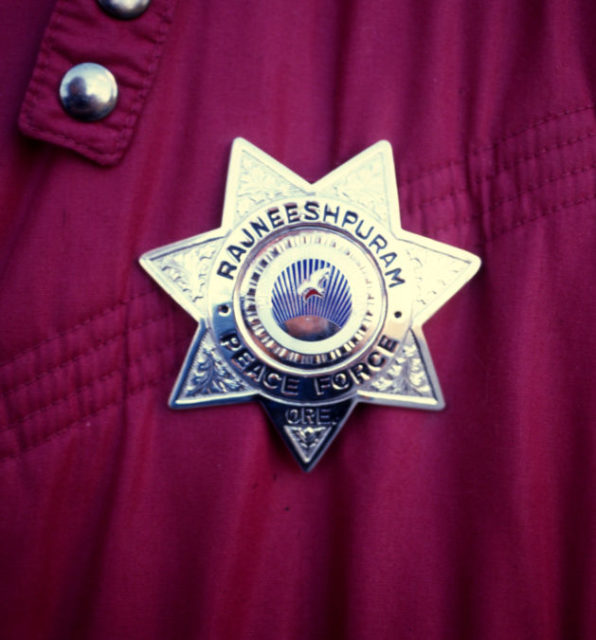
Rajneesh himself speaks out
While all of this was going on, Rajneesh had been in a four-year period of self-isolation. But on September 16, 1985, a year after the attack, he convened a press conference where he had startling news.
Rajneesh claimed that his chief lieutenant Sheela Silverman (also known as Ma Anand Sheela) and her associates had fled to Europe. Other commune members had informed Rajneesh that Sheela and the others were responsible for the Salmonella outbreak. Calling them a “gang of fascists,” Rajneesh gave a list of other people they’d tried to poison.

He invited the authorities to enter his commune and investigate the matter. Around 50 investigators arrived at Rajneeshpuram on October 2, 1985, and bacteria samples taken from the commune’s laboratories were found to be an exact match to the strain that had hit residents of The Dalles.
What else did they have planned?
Evidence was found that the Rajneeshees were planning to add Salmonella to the water supply, but luckily they never did.
Investigators found that the followers had been experimenting with other bacteria, poisons, and chemicals. Michael Skeels, Director of the Oregon State Public Health Laboratory, described the lab as “a bacteriological freezer-dryer for large-scale production” of microbes.
Doctored tapes implied Rajneesh said it was okay to kill people
When the matter came to court, various people from Rajneeshpuram gave testimony. A few of them said that Sheela had played them tapes of their leader saying that they must do anything necessary to preserve his vision. Others gave evidence that Sheela had edited tapes of Rajneesh talking over the years so that she could produce something that sounded like him backing up her plans.
Her husband, John Jay Shelfer, said: “Sheela was very good at framing the issues in a way that would invite Osho’s [Rajneesh’s] approval of whatever she approved to do. She might ask a general, broad question, get an answer, and then, she would go back and use that as Osho authorizing whatever it was that she wanted to do.”

From a poisoner in prison to running nursing homes
Sheela was arrested along with another Rajneeshpuram leader, Diane Yvonne Onang (Ma Anand Puja), in West Germany on October 28, 1985. After being convicted for other poisonings alongside The Dalles incident, the two women were sent to prison. Both were released early on parole for good behavior, having spent only 29 months in prison.
When Sheela’s green card was revoked, she moved to Switzerland where she ran two nursing homes.
Aftermath on a local and national scale
At the time of the poisoning, people were afraid to go out and socialize. The local economy was badly hit, and all but one of the restaurants targeted went out of business.
Speaking about the incident, Skeels is quoted in Betrayal of Trust: The Collapse of Global Public Health as saying: “The first significant biological attack on a US community was not carried out by foreign terrorists smuggled into New York, but by legal residents of a US community. The next time it happens it could be with more lethal agents.”
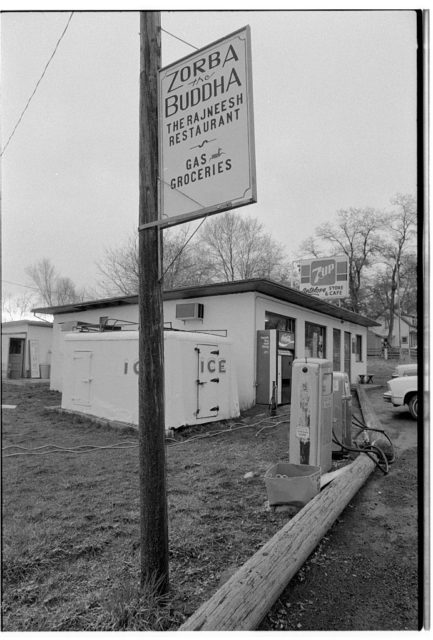
Despite the fact that a thorough investigation was undertaken, the results were never published for fear that it might encourage copycat crimes.
More from us: Why Pub Owners Would Mix Poison Into the Drinks They Served
On a more positive note, The Atlantic points out that this incident shows just how hard it is to commit voter fraud: “Even for a group with thousands of loyal followers, millions of dollars, and a willingness to use germ warfare, it couldn’t achieve its relatively small goal of winning two county commissioner seats.”
